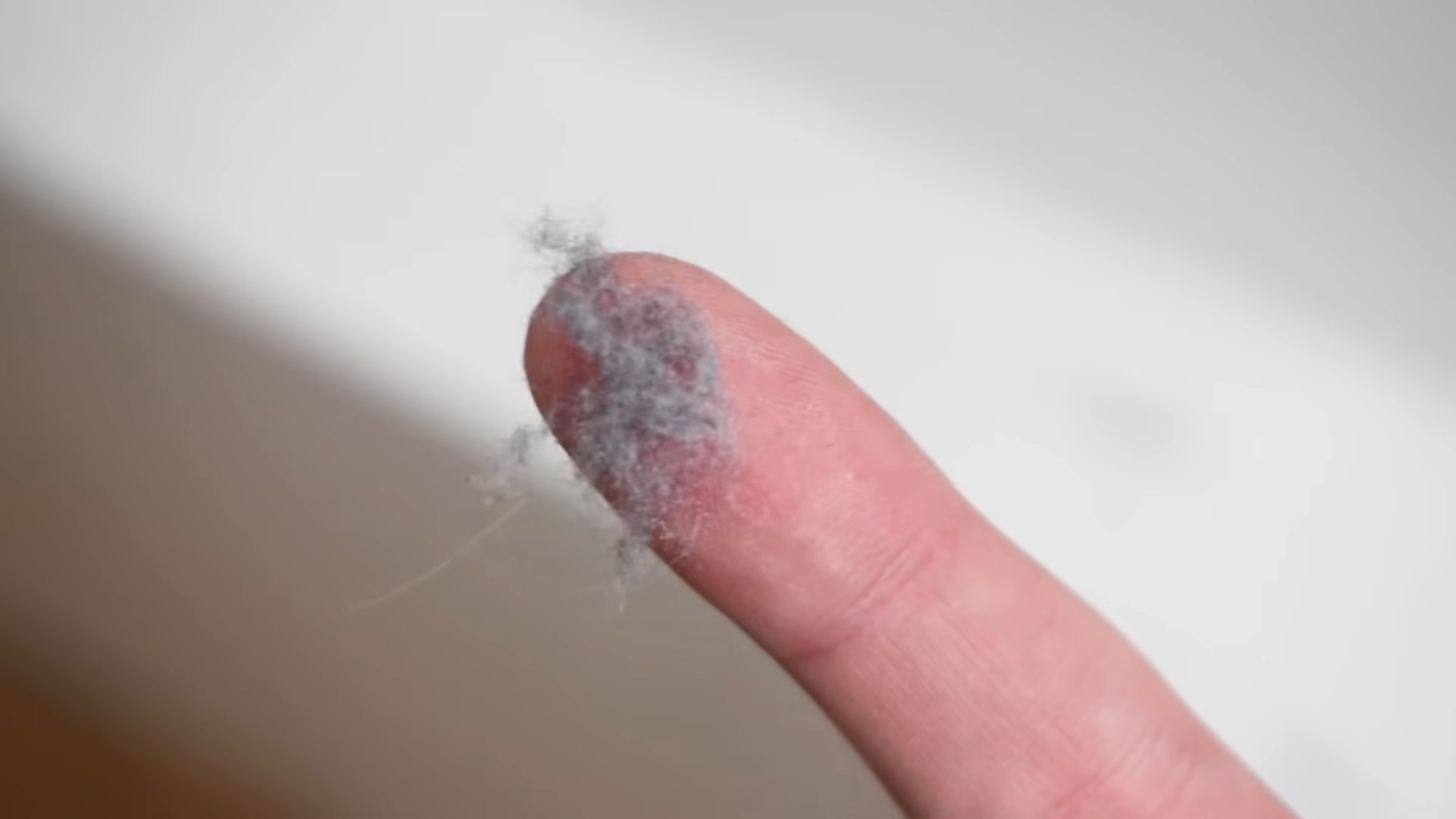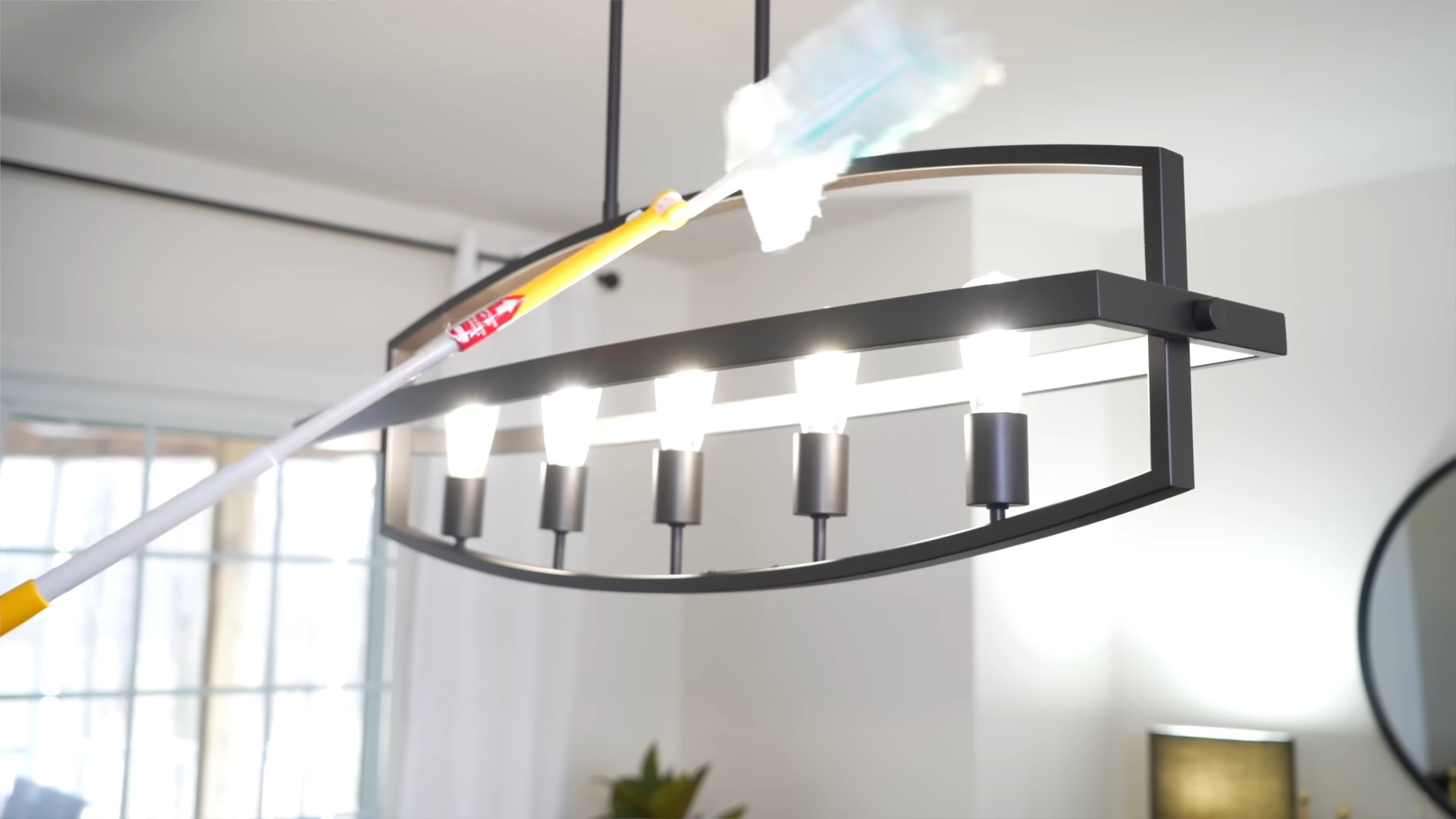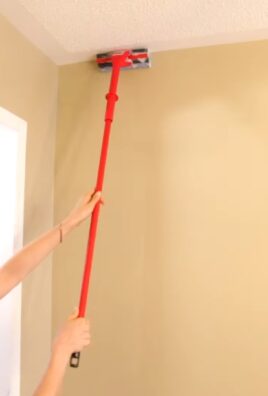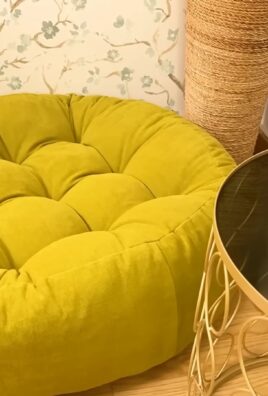Dusting Hacks: Are you tired of battling dust bunnies that seem to multiply overnight? Do you dream of a home where surfaces gleam and the air feels fresh and clean? You’re not alone! For centuries, keeping our homes free from dust has been a universal challenge. From ancient civilizations using rudimentary tools to sweep away debris to modern-day vacuums, the quest for a dust-free haven continues.
But what if I told you that you don’t need expensive gadgets or harsh chemicals to win the war against dust? This article is packed with simple, effective, and often surprising dusting hacks that will transform your cleaning routine. We’ll explore DIY solutions using items you probably already have in your pantry, and share clever techniques to reach those hard-to-clean spots.
Why is mastering these dusting hacks so important? Beyond aesthetics, excessive dust can trigger allergies, irritate respiratory systems, and even harbor harmful bacteria. By implementing these easy-to-follow tips, you’ll not only create a more beautiful living space but also improve your overall health and well-being. Let’s dive in and discover the secrets to a cleaner, healthier, and happier home!

Dusting Hacks for a Cleaner Home: My Secret Weapons!
Okay, friends, let’s talk about dusting. I know, I know, it’s nobody’s favorite chore. But a dust-free home is a happier, healthier home, and I’ve got some seriously effective hacks to make the process quicker, easier, and dare I say, almost enjoyable! I’m going to share my go-to methods, from prepping your space to tackling those tricky spots. Get ready to say goodbye to dust bunnies!
Prepping for Dusting: Setting Yourself Up for Success
Before you even think about grabbing a duster, a little prep work goes a long way. Trust me on this one!
* Declutter First: This is HUGE. The less stuff you have to dust around, the faster and more effective your dusting will be. Take a few minutes to clear surfaces of unnecessary items. Put away books, knick-knacks, and anything else that’s just sitting there collecting dust.
* Open Windows (Weather Permitting): Fresh air is your friend! Opening windows helps circulate air and prevent dust from simply settling back down. Just be mindful of pollen if you have allergies.
* Turn Off Ceiling Fans: This seems obvious, but it’s easily forgotten. You don’t want to be dusting while the fan is just redistributing dust everywhere.
* Gather Your Supplies: Having everything you need within reach will save you time and frustration. Here’s my essential dusting toolkit:
* Microfiber cloths (lots of them!)
* A good duster (I love the extendable kind)
* A vacuum cleaner with attachments
* A spray bottle with dusting spray (more on this later!)
* Old socks (yes, really!)
* Cotton swabs
* A step stool or ladder (for those high-up spots)
* Furniture polish (if needed)
My Favorite Dusting Tools and Techniques
Now for the fun part! (Okay, maybe not *fun*, but definitely satisfying when you see the results.)
* Microfiber Cloths: The Workhorse of Dusting
Microfiber cloths are my absolute go-to for dusting. They’re super absorbent, trap dust effectively, and are washable and reusable. I prefer to use slightly damp microfiber cloths for most surfaces. The dampness helps to grab the dust instead of just pushing it around.
1. Fold the Cloth: Fold your microfiber cloth into quarters. This gives you eight clean surfaces to work with.
2. Dampen Lightly: Lightly dampen one side of the cloth with water or your dusting spray. Wring out any excess moisture. You want it damp, not soaking wet.
3. Wipe Surfaces: Wipe surfaces in a consistent direction, overlapping each stroke slightly.
4. Flip and Refold: As one surface of the cloth gets dirty, flip it over to a clean side. When all sides are dirty, refold the cloth to reveal a fresh surface.
5. Wash and Reuse: After you’re done dusting, toss the microfiber cloths in the washing machine. Avoid using fabric softener, as it can reduce their absorbency.
* Extendable Duster: Reaching New Heights (and Corners!)
An extendable duster is a lifesaver for reaching high places like ceiling fans, light fixtures, and crown molding. Look for one with a microfiber or feather duster head.
1. Extend the Duster: Adjust the duster to the desired length.
2. Dust from Top to Bottom: Start at the highest point and work your way down. This prevents dust from falling onto already cleaned surfaces.
3. Use Gentle Pressure: Apply gentle pressure to avoid damaging delicate surfaces.
4. Clean the Duster Head: After each use, shake the duster head outside or vacuum it with a brush attachment to remove accumulated dust.
* Vacuum Cleaner with Attachments: Powering Through Dust
Your vacuum cleaner isn’t just for floors! With the right attachments, it can be a powerful dusting tool.
1. Use the Brush Attachment: The brush attachment is perfect for dusting upholstery, curtains, lampshades, and delicate surfaces.
2. Vacuum in Sections: Work in small sections, overlapping each stroke.
3. Empty the Dustbin Regularly: A full dustbin reduces the vacuum’s suction power.
4. Crevice Tool for Tight Spaces: The crevice tool is ideal for getting into tight spaces like window tracks and baseboards.
* Dusting Spray: My Secret Weapon for Stubborn Dust
A good dusting spray can help to loosen stubborn dust and prevent it from clinging to surfaces. I prefer to make my own natural dusting spray.
My DIY Dusting Spray Recipe:
* 1 cup water
* 1/4 cup white vinegar
* 2 tablespoons olive oil
* 10-15 drops of your favorite essential oil (lemon, lavender, or eucalyptus are great choices)
1. Combine Ingredients: Combine all ingredients in a spray bottle and shake well.
2. Spray Lightly: Lightly spray the surface you want to dust.
3. Wipe with a Microfiber Cloth: Immediately wipe the surface with a clean microfiber cloth.
4. Test in an Inconspicuous Area: Before using on delicate surfaces, test the spray in an inconspicuous area to ensure it doesn’t cause any damage.
* Old Socks: The Unexpected Dusting Tool
Yes, you read that right! Old socks are surprisingly effective for dusting blinds, vents, and other hard-to-reach areas.
1. Slip the Sock Over Your Hand: Put an old sock over your hand, like a glove.
2. Dust Blinds: Use your sock-covered hand to wipe each slat of your blinds.
3. Dust Vents: Use the sock to wipe down vents and other hard-to-reach areas.
4. Wash and Reuse: After you’re done dusting, toss the sock in the washing machine.
* Cotton Swabs: Precision Dusting for Small Spaces
Cotton swabs are perfect for dusting small, intricate areas like keyboards, picture frames, and decorative items.
1. Dampen the Swab: Lightly dampen the cotton swab with water or your dusting spray.
2. Dust Carefully: Gently dust the area, being careful not to apply too much pressure.
3. Use a Dry Swab to Remove Excess Moisture: If necessary, use a dry cotton swab to remove any excess moisture.
Tackling Tricky Dusting Spots: My Pro Tips
Some areas are just notoriously difficult to dust. Here are my tips for conquering those tricky spots:
* Electronics: Always unplug electronics before dusting. Use a dry microfiber cloth or a can of compressed air to remove dust from screens, keyboards, and other electronic devices. Avoid using liquid cleaners on screens, as they can damage the coating.
* Bookshelves: Remove books from the shelves and dust them individually with a dry microfiber cloth. Dust the shelves themselves with a damp microfiber cloth or your dusting spray.
* Lampshades: Use the brush attachment on your vacuum cleaner to dust lampshades. For fabric lampshades, you can also use a lint roller to remove dust and pet hair.
* Plants: Dust plant leaves with a damp microfiber cloth. This will help them to absorb sunlight more efficiently.
* Baseboards: Use the crevice tool on your vacuum cleaner to remove dust from baseboards. You can also wipe them down with a damp microfiber cloth or your dusting spray.
* Window Tracks: Use the crevice tool on your vacuum cleaner to remove dust and debris from window tracks. You can also use a cotton swab or an old toothbrush to clean tight corners.
* Ceiling Fans: Use an extendable duster to dust ceiling fans. To prevent dust from falling on you, try slipping an old pillowcase over each blade and wiping it clean. The pillowcase will catch the dust.
* Artwork and Mirrors: Use a soft, dry microfiber cloth to dust artwork and mirrors. Avoid using harsh chemicals or abrasive cleaners, as they can damage the surface. For stubborn smudges, you can use a glass cleaner specifically designed for artwork.
Maintaining a Dust-Free Home: Prevention is Key!
Dusting is an ongoing process, but there are things you can do to minimize dust buildup and make your life easier.
* Change Air Filters Regularly: Dirty air filters can circulate dust and allergens throughout your home. Change your air filters every 1-3 months, depending on the type of filter and the air quality in your area.
* Vacuum Regularly: Vacuum your floors at least once a week, and more often in high-traffic areas.
* Wash Bedding

Conclusion
So, there you have it! Mastering these simple yet incredibly effective dusting hacks can truly transform your home environment. We’ve explored how to banish dust bunnies from under your furniture, revitalize your dusty electronics, and even create your own eco-friendly dusting solutions. But why is embracing these DIY methods so crucial?
First and foremost, it’s about creating a healthier living space. Dust isn’t just unsightly; it’s a breeding ground for allergens, dust mites, and other irritants that can trigger allergies, asthma, and other respiratory problems. By implementing these dusting hacks, you’re actively working to improve the air quality in your home and protect the well-being of yourself and your loved ones.
Secondly, these methods are often more cost-effective and environmentally friendly than relying solely on commercial dusting products. Many store-bought cleaners contain harsh chemicals that can be harmful to your health and the environment. By using natural ingredients like vinegar, olive oil, and essential oils, you can create your own effective dusting solutions that are both safe and sustainable.
Furthermore, these dusting hacks are incredibly versatile and adaptable to your specific needs and preferences. Feel free to experiment with different essential oil blends to create a dusting spray that smells amazing and provides additional benefits like aromatherapy. You can also adjust the ratios of ingredients in the DIY solutions to suit the type of surfaces you’re cleaning. For example, for delicate wood furniture, you might want to use a gentler dusting solution with a higher concentration of olive oil.
Don’t be afraid to get creative and personalize these dusting hacks to make them your own!
Consider these variations:
* **Lemon-infused dusting spray:** Add a few drops of lemon essential oil to your dusting spray for a refreshing citrus scent and extra cleaning power. Lemon oil is a natural degreaser and disinfectant.
* **Lavender-scented dusting cloths:** Soak your microfiber cloths in a solution of water and lavender essential oil for a calming and relaxing dusting experience.
* **Dusting with old socks:** Turn old socks into handy dusting mitts for reaching tight spaces and corners. Simply slip a sock over your hand and get to work!
* **DIY furniture polish:** Mix equal parts olive oil and lemon juice for a natural furniture polish that will leave your wood surfaces looking shiny and new.
We wholeheartedly encourage you to try these dusting hacks and experience the difference they can make in your home. Not only will your home be cleaner and healthier, but you’ll also feel a sense of accomplishment knowing that you’re taking proactive steps to create a more sustainable and eco-friendly living environment.
But the journey doesn’t end here! We want to hear about your experiences. Did you try one of these dusting hacks? Did you discover a new and innovative way to tackle dust? Share your tips, tricks, and feedback in the comments below. Let’s create a community of dust-busting experts and help each other achieve cleaner, healthier homes! Your insights could be invaluable to other readers who are looking for effective and affordable ways to combat dust. So, go ahead, give these **dusting hacks** a try and let us know what you think! We can’t wait to hear from you.
Frequently Asked Questions (FAQs)
What exactly is dust made of?
Dust is a complex mixture of various particles, including dead skin cells, pet dander, dust mites and their feces, pollen, mold spores, textile fibers, soil, insect parts, and even particles from outer space! The composition of dust can vary depending on your location, climate, and lifestyle. Understanding what dust is made of can help you choose the most effective dusting methods for your home.
How often should I dust my home?
The frequency of dusting depends on several factors, such as the number of people and pets living in your home, the presence of allergies or asthma, and the amount of outdoor activity. As a general guideline, aim to dust your home at least once a week. High-traffic areas and surfaces that tend to accumulate dust quickly, such as shelves, tables, and electronics, may require more frequent dusting. If you have allergies or asthma, you may need to dust even more often to minimize exposure to allergens.
What are the best tools for dusting?
The best tools for dusting include microfiber cloths, feather dusters, vacuum cleaners with HEPA filters, and electrostatic dusters. Microfiber cloths are excellent for trapping dust and preventing it from being redistributed into the air. Feather dusters are useful for dusting delicate items and hard-to-reach areas. Vacuum cleaners with HEPA filters can effectively remove dust and allergens from carpets, rugs, and upholstery. Electrostatic dusters attract dust particles with an electrical charge, making them ideal for dusting electronics and other sensitive surfaces.
Are there any surfaces I should avoid using DIY dusting solutions on?
While most DIY dusting solutions are safe for a variety of surfaces, it’s important to exercise caution when using them on delicate or sensitive materials. Avoid using vinegar-based solutions on marble, granite, or other natural stone surfaces, as the acidity can damage the stone. Also, avoid using oil-based solutions on unfinished wood, as the oil can penetrate the wood and cause staining. Always test a small, inconspicuous area before applying any DIY dusting solution to a larger surface.
How can I prevent dust from accumulating in my home?
Preventing dust from accumulating in your home is an ongoing process that involves a combination of strategies. Here are some tips to help you minimize dust buildup:
* **Use doormats and rugs:** Place doormats at all entrances to trap dirt and debris before they enter your home.
* **Change your air filters regularly:** Replace your HVAC air filters every 1-3 months to remove dust and allergens from the air.
* **Wash bedding frequently:** Wash your bedding at least once a week in hot water to kill dust mites.
* **Declutter your home:** Reduce the amount of clutter in your home to minimize the surfaces where dust can accumulate.
* **Control humidity levels:** Maintain a humidity level between 30% and 50% to prevent mold growth and dust mite infestations.
* **Groom your pets regularly:** Brush your pets regularly to remove loose fur and dander.
* **Seal cracks and crevices:** Seal any cracks or crevices in your walls, floors, and windows to prevent dust from entering your home.
Can essential oils really help with dusting?
Yes, certain essential oils can enhance your dusting routine. Lemon and tea tree oil have antimicrobial properties, helping to disinfect surfaces. Lavender and eucalyptus oil can add a pleasant scent and may have calming effects. Always dilute essential oils properly with water or a carrier oil before using them on surfaces.
What’s the best way to dust electronics without damaging them?
Dusting electronics requires a gentle approach. Always turn off and unplug the device before dusting. Use a soft, dry microfiber cloth to wipe down the screen and casing. For hard-to-reach areas, use a can of compressed air to blow away dust. Avoid using liquid cleaners directly on electronics, as they can damage the internal components.
How do I get rid of dust mites?
Dust mites are microscopic creatures that thrive in warm, humid environments and feed on dead skin cells. To get rid of dust mites, focus on reducing humidity levels in your home, washing bedding frequently in hot water, and using allergen-proof mattress and pillow covers. Vacuum carpets and upholstery regularly with a vacuum cleaner equipped with a HEPA filter. You can also use a dust mite spray to kill dust mites on surfaces.
Is it worth investing in a high-quality air purifier?
If you have allergies, asthma, or other respiratory problems, investing in a high-quality air purifier can be a worthwhile investment. Air purifiers with HEPA filters can effectively remove dust, pollen, mold spores, and other allergens from the air, improving indoor air quality and reducing allergy symptoms. Look for an air purifier that is appropriately sized for the room you want to purify and that has a high Clean Air Delivery Rate (CADR).





Leave a Comment